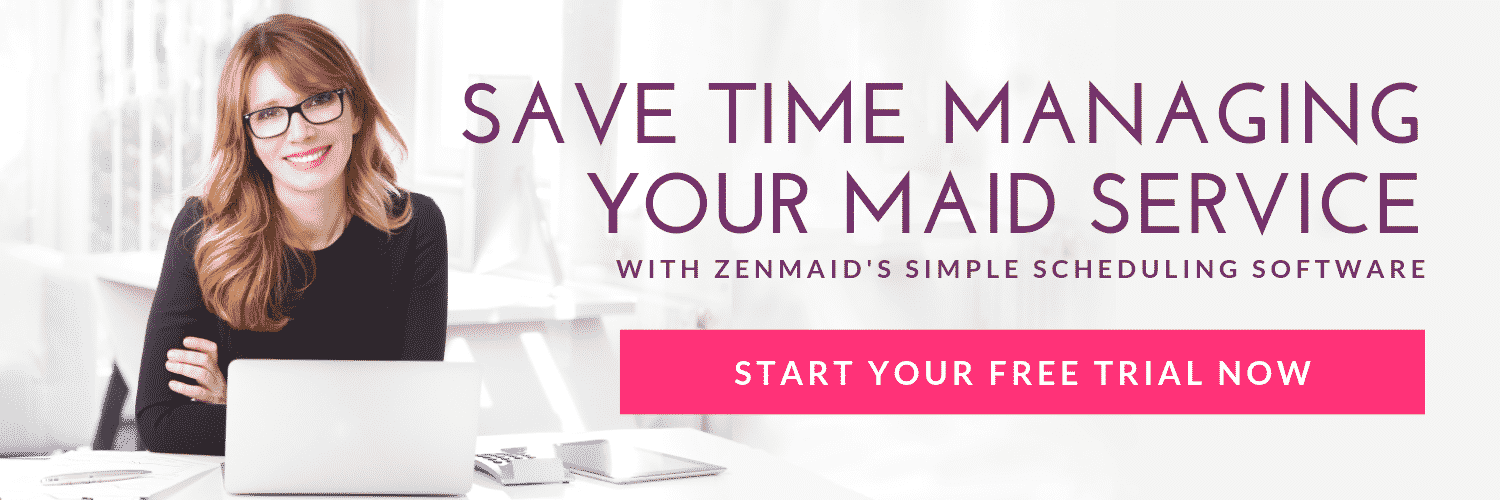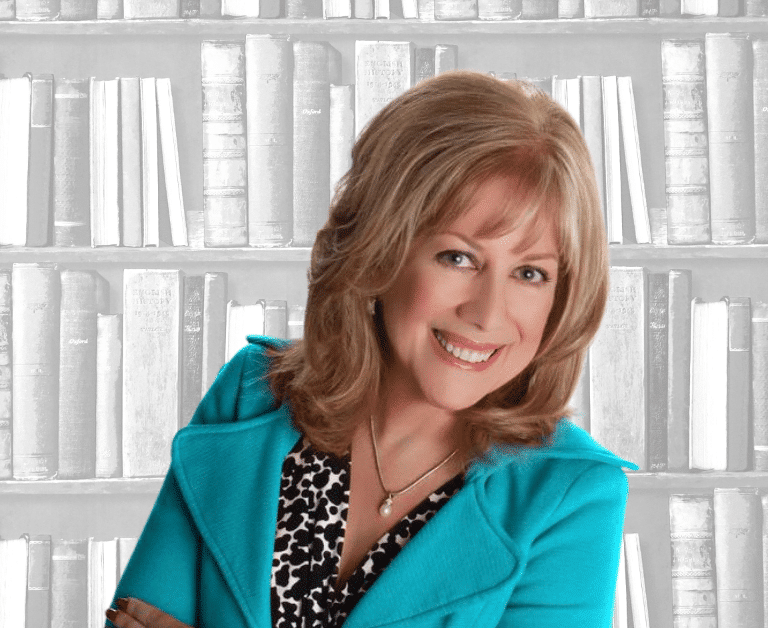Last Updated on July 3, 2024 by The ZenMaid Team
In simple terms, this process is defined as: how you integrate new employees into your business.
Onboarding is often an afterthought, but it shouldn’t be — we all have to onboard new employees before we can really grow our businesses.
If you’ve been in this situation before, we get it. With employee shortages and busy schedules, it can be easy to hire someone and then feel like you’re finally done — it’s finally time to sit back and relax… But wait. Your employees are one of your biggest assets which makes it SO important to have a GREAT onboarding process.
Before you learn the tricks of the trade, ask yourself if you have the right mindset concerning your hiring process. Do you assume that your new employees will quit soon? Do you believe that it’s almost a waste of your time to train them in the first place?
If your answer is yes, then you’ll be surprised to find out that onboarding is no less crucial to the success of your business than recruiting.
Highly engaged employees result in a 21% greater profitability for your business. That’s a lot of money! So why throw it away with a poor onboarding process?
The first day of onboarding matters for your cleaning business
Think back on your first day at a new job. What was it like? It’s likely that you may have felt overwhelmed, confused, scared, or inadequate.
If that was you, promise yourself that you will strive to create the best possible onboarding experience for others. After all, you never get a second chance to make a good impression.
The quality of your onboarding process affects your employee’s readiness to be part of a team. If you want a successful onboarding program, you need to implement these four principles on the first day of the process:
- Culture: Your company’s culture gives your employees a sense of what the company is — its mission, values, beliefs, and systems. It’s important that you show what’s “normal” in your business.
- Clarification: Start with your new employee’s job description. They need to understand their role in your company and all of the expectations that come with it. Even if you hired a person who worked as a cleaner before, don’t assume that the company they worked for runs the same as yours. If you tell an employee that they start at 8:30 am, you need to clarify your statement. Perhaps you meant that they arrive at a residential home at 8:30 or maybe you meant that they need to clock in at 8:30 and gather their supplies for the day. It’s better to be too specific rather than not specific enough.
- Compliance: This element of your onboarding process covers the legal and policy-related side of your business. During this segment, you’ll cover harassment, discipline, safety, drug use, etc. This is a crucial part of your onboarding process because you don’t want to wait until a drug or alcohol-related incident occurs to cover your compliance practices. Start early!
- Connection: This can be an overlooked part of the process. Connection is vital because your employees need healthy relationships with one another. Your new hires need to feel like they are free to ask questions and that they are accepted and respected. If an employee doesn’t feel comfortable talking with other experienced employees, then they are bound to make wrong decisions. And what follows? A bad customer experience.
These four principles also help set the tone for a healthy company culture. Interested for more on this topic? Head here next!

What to include in your onboarding checklist
Once you’ve set the tone for your business, you’re ready to tackle your first checklist. Your checklist serves as your map. It guides your onboarding process so that you aren’t forced to improvise last minute. Nothing feels better than showing up prepared, right?
Preparation Checklist
These are the steps that need to be taken before an employee’s start date. Make sure that you have these things taken care of before your employee walks through your doors because your day will flow smoothly and your employee will feel less anxious.
- Paperwork such as a W-4, W-9, or I-9
- A copy of the policy manual
- Schedule of the week
- Time clock instructions
- Clean uniforms and badges
- Welcome kit (fill this with fun goodies like a gift card or a mug)
- Assign a buddy to assist the employee and answer any questions. (This buddy serves as a point of contact and helps the new hires adjust to their new roles.)
If you don’t have these things ready, your new hire might get the impression that you don’t care enough about them — or their job — to prepare ahead of time.
Welcome and Expectations Checklist
In this step, you need to make your employee feel at home and also teach them some basics at the same time. Make sure that you go slowly because you don’t want to throw everything at them all at once.
- Present the employee with a welcome kit
- Give them a tour of the office (show them where to park, how to check out supplies etc)
- Explain how their performance will be evaluated so they have crystal clear expectations
Policies Checklist
You’ll need to take a chunk out of the day to go over your policies. Although a lot of policies are standard because they are the rule of law, some of your policies may be unique to your business. Add your standards to your checklists such as dress code, absences, payroll procedures, breaks, holidays, performance reviews, and cell phone use.
Safety and Position Training Checklist
We cannot overemphasize the importance of this step. Your employees may drive vehicles and use various cleaning supplies that can be dangerous if not used properly and with the appropriate PPE. It’s your responsibility to make sure that all of your bases are covered before they clean their first home or commercial space. See the graphic below for what to include in your safety and position training.
Home Tour and Onsite Training Checklist
After you’ve completed the previous steps and your employee feels more comfortable, it’s time to begin their practical training.
During this portion of the onboarding process, you can show your new hire how to enter a home, what the security procedures are, what cleaning tools they can use, which cleaning products they need if the homeowner provides the products, who they’ll be working with, and if there are spaces in the house that are off-limits.
It’s especially important to remind your new hire that your business operates with a team mentality: Every person on the team plays an important role. Every person is valuable. Every person is responsible for the cleanliness of the house.

Pre-shift follow-up Checklist
Whew, you’ve done a lot of work up until this point! Take a deep breath and keep it up. You’re almost there.
Your pre-shift follow-up needs to be completed before the employee begins their second day on the job. Collect their handbook signatures, review the employee’s schedule, and meet with their “buddy” to discuss any signs of progress or red flags.
Post-Shift Follow-up Checklist
This brings us to the last part of our onboarding checklist.
For at least five shifts, implement a structured follow-up with your new employees. Remember the four C’s that we reviewed earlier? — Culture, clarification, compliance, and connection. Your structured follow-up shows that you care about your employees and that you want to make sure that they feel respected, valued, and prepared for the tasks ahead of them.
This follow-up communicates to your employees that they are still in the learning process and you (and your team) recognize that.
- Ask the employee how they’re adjusting
- Review the employee’s job performance
- Offer direction and encouragement.
Best onboarding practices for your maid service
Your checklist serves as a guide for your onboarding process. It’s fairly simple to understand yet involved. How you choose to create and use your checklist is up to you. Every business is different and you will inevitably add some of your personality to this process.
As you create your unique onboarding processes remember to include most if not all of these into your thought process and actions:
- Be systematic
- Be prepared
- Involve a “buddy”
- Showcase employee and customer experience
- Clarify roles
- Set expectations
- Be comprehensive
- Follow up
- Review and modify
- Communicate culture
Next Steps
We hope you feel better equipped to hire new cleaners with these checklists from Jean Hanson. The next step to your hiring process may be to automate it! Automation is key if you’ve felt stressed and crunched for time while you onboarded a new hire. Learn how to do it in this article.
Our free ZenMaid Mastermind community, filled with other like-minded business owners, is here to answer your questions, ease the burden of onboarding, and encourage you to reach your potential. Come say ‘hello’ and check it out!
If you found this article helpful for your maid service, you may also like:
- How Cheryl Hajjar Added $75k to Annual Revenue With One Maid Service Tool
- Q&A with Stephanie Pipkin: Lead Generations Tips for Maid Service Owners
- 10 Things I Do in a Day as a Maid Service Owner
- The Ultimate Guide To SEO for Cleaning Companies [2024 Guide]
- Start Delegating Like a Pro: VA Delegation for Maid Services
For more resources on how to grow and perfect your cleaning business, check out the replays from the 2021 Maid Summit, hosted by ZenMaid. The summit featured more than 60 presentations from other maid service owners who shared tools and strategies to help you achieve the highest levels of success in your business.
This talk from Jean Hanson first aired at the 2019 Maid Summit. You can watch it here.
About the presenter
Jean Hanson is the co-founder of The Janitorial Store, My House Cleaning Biz, and Marketing Systems By Design. As a true veteran, she has over thirty years of experience in the cleaning industry! Jean is an I.C.E. (ISSA Certification Expert) and a Certified Marketing Consultant with a special focus on onboarding and training of cleaning employees.
This talk first aired at the 2019 Maid Service Success Summit.
The Maid Summit is an annual online event that brings together the most successful leaders in the cleaning industry, like Debbie Sardone, Angela Brown, Courtney Wisely, Amy Caris, Chris Schwab and more. Get free access to masterclasses and workshops that will help you to grow, scale and automate your cleaning business so you can get more leads and create more profit. Make sure you’re on our email list to find out how to get free tickets to the next event.
You and your maid service deserve a little peace and quiet. Try ZenMaid for free today!













